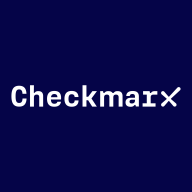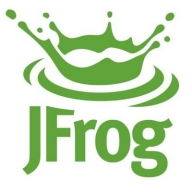

JFrog Xray and Checkmarx Software Composition Analysis compete in the software security domain. JFrog Xray is favored for ease of integration and support, while Checkmarx is preferred for its advanced features, making it a strong investment.
Features: JFrog Xray offers comprehensive vulnerability scanning, deep artifact analysis, and integration with JFrog Artifactory, which is beneficial for open-source component management in CI/CD pipelines. Checkmarx Software Composition Analysis provides detailed risk assessment, effective policy management, and advanced analysis tools, suitable for complex environments.
Room for Improvement: JFrog Xray could enhance scanning depth and reporting clarity, and expand integration flexibility outside of JFrog Artifactory. Checkmarx Software Composition Analysis may improve by simplifying initial setup processes, reducing false positives, and enhancing UI for better user experience.
Ease of Deployment and Customer Service: JFrog Xray is known for its straightforward deployment, especially within JFrog ecosystems, reducing setup time. Checkmarx Software Composition Analysis offers flexible deployment options with strong customer support, suited for diverse IT infrastructures.
Pricing and ROI: JFrog Xray involves lower setup costs, particularly for current JFrog users, providing strong ROI through integration in DevOps pipelines. Checkmarx Software Composition Analysis requires higher initial investment due to its extensive feature set, but offers substantial ROI by delivering comprehensive software vulnerability insights.
| Product | Market Share (%) |
|---|---|
| JFrog Xray | 8.9% |
| Checkmarx Software Composition Analysis | 2.4% |
| Other | 88.7% |


| Company Size | Count |
|---|---|
| Small Business | 7 |
| Large Enterprise | 8 |
| Company Size | Count |
|---|---|
| Small Business | 1 |
| Midsize Enterprise | 3 |
| Large Enterprise | 6 |
Checkmarx Software Composition Analysis (SCA) helps organizations manage the risks associated with open source and third-party components in their software applications. While leveraging open source libraries and third-party dependencies is common practice, it can also introduce security vulnerabilities and license risks.
Checkmarx SCA offers a multifaceted approach to managing these risks by:
Automatically scanning project repositories, build configurations, and manifests to create a comprehensive inventory of all components, including version information and associated licenses.
Performing vulnerability assessments on each component, including identifying and prioritizing actual exploitable or reachable vulnerabilities.
Protecting organizations from software supply chain attacks involving malicious packages, such as the XZ Utils backdoor.
Identifying licenses associated and providing insights into license obligations, restrictions, and potential conflicts.
Integrating seamlessly into existing development workflows and CI/CD pipelines.
Providing actionable remediation guidance to help organizations address identified vulnerabilities and compliance issues effectively.
JFrog is on a mission to enable continuous updates through Liquid Software, empowering developers to code high-quality applications that securely flow to end-users with zero downtime. The world’s top brands such as Amazon, Facebook, Google, Netflix, Uber, VMware, and Spotify are among the 4500 companies that already depend on JFrog to manage binaries for their mission-critical applications. JFrog is a privately-held, global company, and is a proud sponsor of the Cloud Native Computing Foundation [CNCF].
If you are a team player and you care and you play to WIN, we have just the job you're looking for.
As we say at JFrog: "Once You Leap Forward You Won't Go Back!"
We monitor all Software Composition Analysis (SCA) reviews to prevent fraudulent reviews and keep review quality high. We do not post reviews by company employees or direct competitors. We validate each review for authenticity via cross-reference with LinkedIn, and personal follow-up with the reviewer when necessary.